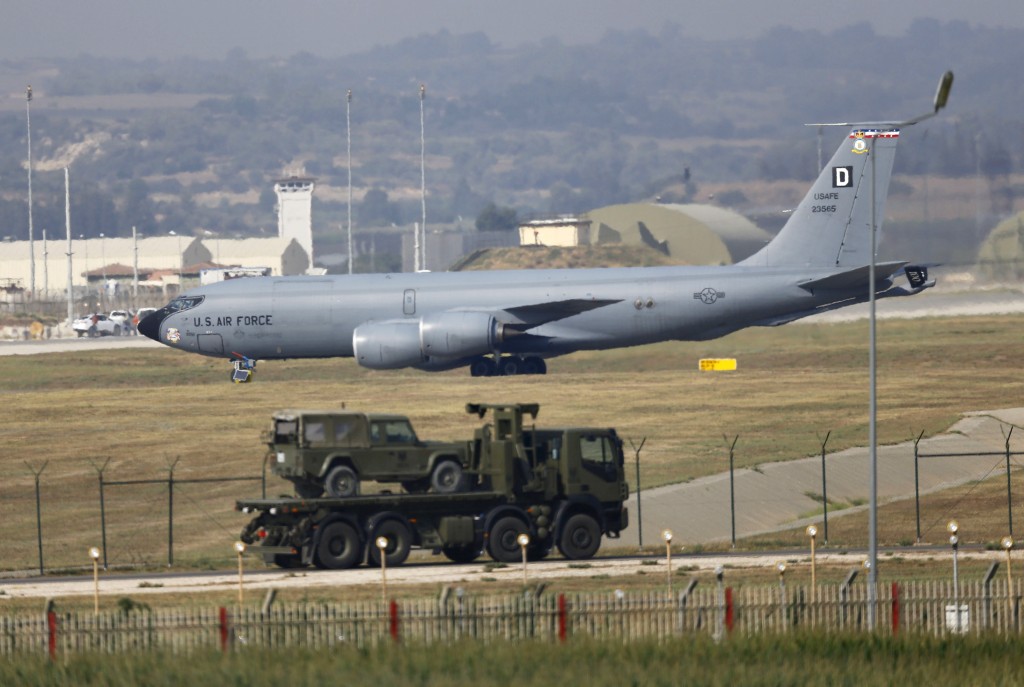U.S. Air Force launches first ever AI-piloted fighter flight as American military pivots to human-less warfare
08/10/2023 / By Ethan Huff

For the first time, the United States military has successfully flown a fighter plane using artificial intelligence (AI), meaning no human soldiers necessary.
The Air Force reportedly flew an XQ-58A Valkyrie unmanned plane out of Florida’s Eglin Air Force Base on July 27. A statement issued by the Air Force Research Lab states that the AI algorithms uploaded into the jet allowed it to fly for three full hours before safely landing.
In partnership with Kratos, the Air Force Research Lab reported that it took millions of man hours to create the AI algorithms and associated simulations to make the project a success.
“AI will be a critical element to future warfighting and the speed at which we’re going to have to understand the operational picture and make decisions,” announced Brig. Gen. Scott Cain, the research lab commander.
“AI, Autonomous Operations, and Human-Machine Teaming continue to evolve at an unprecedented pace and we need the coordinated efforts of our government, academia, and industry partners to keep pace.”
(Related: Perhaps these AI robots are intended to take over duties for all the dead servicemen who were forced by the Pentagon and the Biden regime to get “vaccinated” for the Wuhan coronavirus [Covid-19]?)
Will the U.S. military eventually become an army of AI robot soldiers?
The reason the Valkyrie was chosen for the project is that it is a reusable unmanned plane that was specifically designed to be far less costly than its traditional counterparts, human piloted or otherwise.
The successful July 25 flight “put a capstone,” to quote Stripes, on the multi-year partnership that began with the Skyborg Vanguard program.
According to reports, the plane was rocket-launched from a rail system and controlled from either a ground station or airborne fighter. The plane’s onboard computer system was used to determine the best flight path and throttle settings to obey its input commands.
Defense News reported that the two-year project involved a team of personnel from both the lab and the Air Force Life Cycle Management Center, whose goal is to create an unmanned fighter aircraft controlled by AI.
“This sortie officially enables the ability to develop [artificial intelligence and machine learning] agents that will execute modern air-to-air and air-to-surface skills that are immediately transferrable to the CCA program,” said Col. Tucker Hamilton, chief of AI test and operations with the Air Force.
Known as a collaborative combat aircraft, or the CCA program, the ultimate purpose behind the research and test flight is to create a fleet of combat drones that can operate without the need for actual human pilots – think planet of the machines.
Futuristic sci-fi films from the past depicted this kind of thing with a dystopian bent, and now we are seeing it come to life right here in the good ol’ US of A, which is on a fast track towards becoming an AI-driven society.
“The mission proved out a multi-layer safety framework on an AI/ML-flown uncrewed aircraft and demonstrated an AI / ML agent solving a tactically relevant “challenge problem” during airborne operations,” Col Hamilton further added.
“This sortie officially enables the ability to develop AI / ML agents that will execute modern air-to-air and air-to-surface skills that are immediately transferrable to other autonomy programs.”
Dr. Terry Wilson, the program manager at AFRL’s Air Combat Operations (AACO), which developed the AI algorithms, further commented that, so far, the “multi-pronged approach to uncrewed flight testing of machine learning artificial intelligence … has met operational experimentation objectives” as desired by the Air Force.
The latest news about the AI takeover of the world can be found at FutureTech.news.
Sources for this article include:
Submit a correction >>
Tagged Under:
AI, air force, artificial intelligence, big government, computing, cyber wars, cyborg, future science, future tech, Glitch, information technology, inventions, military, military tech, national security, robotics, robots, unmanned aircraft, War, warfare, weapons technology, XQ-58A Valkyrie
This article may contain statements that reflect the opinion of the author
RECENT NEWS & ARTICLES
COPYRIGHT © 2017 INFORMATIONTECHNOLOGY.NEWS



















